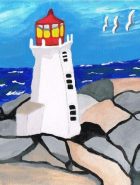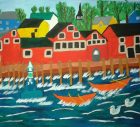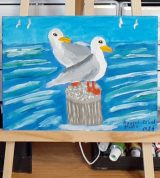WHO IS NANTOSUELTA?
WHY is she so important in today’s New Spirituality?
First a Celtic Woman of water and healing, NANTOSUELTA became the Goddess of the Hearth. Of Home. And something else…
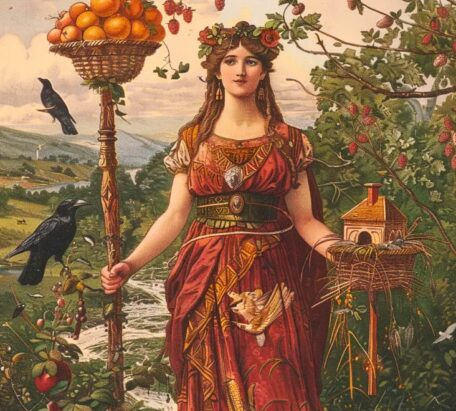
NANTOSUELTA: Celtic Woman, Home Goddess & Raven Keeper [Why is she suddenly so Popular?]
I’ve always had a fascination with Nantosuelta. She was the Homemaking Goddess of the Celtic People. And yet she kept ravens.
Nantosuelta was first a holy woman of Water and of Healing. But also, like the battle-hardened Warrior Women, she always had ravens following her.
“There is wisdom in a raven’s head.” – Old Gaelic Proverb
Ravens were connected with War and the Otherworld in Celtic Mythology. Many feared them. And yet the loving Domestic Goddess, with her raven connection, was also seen as a Prophetess. She knew what the future held for all her children. And if they listened to her, she would guide them.
She was a Protector of the Home and of what today we call Family Values.
Here, from author Judi Singleton, is a spellbinding Guest Blog:
“Nantosuelta: Celtic Woman – Protective Goddess”
Nantosuelta, the Celtic goddess’ name means “Winding River.” She’s celebrated for her protective and domestic roles. She’s often shown holding a model house, symbolizing home, hearth, and prosperity. And often followed by ravens.
As the wife of Sucellos, the God of Agriculture, she embodies nourishment and fertility. This article explores her attributes, cultural significance, and the intriguing symbols associated with her. As well as offering a detailed look into her revered status in Celtic mythology.
Who is Nantosuelta?
Nantosuelta is a prominent woman in Celtic mythology, particularly among the Mediomatrici tribe of Alsace.
She was known to the Western Celts — the Irish, Scottish, Manx and especially northern British. Who called her Nantsovelta. But she was revered mostly by the Gallic Celts of modern France, Belgium, Switzerland, and Northern Italy.
Her name, meaning “Winding River,” shows a connection to water. Although her greatest powers do not directly indicate a water deity. Instead, she is often shown holding a model of a house. Symbolizing her role as a protector of the home and hearth.
Attributes and Symbols
Nantosuelta is frequently portrayed with various symbols that highlight her domestic and protective nature:
- Model House: Often depicted on a long pole, this symbolizes her guardianship over the home.
- Bird: Represents freedom and the connection between the earthly and the divine.
- Beehive and Honeycombs: These symbols are associated with home, prosperity, and nourishment.
- Cornucopia: Signifying abundance and fertility. This aligns her with agricultural prosperity.
Partner of the god Sucellos
Nantosuelta is the wife of Sucellos, the God of Agriculture. Together, they represent a divine partnership that oversees nourishment, fertility, and the well-being of the community. Sucellos is often depicted with a mallet and a pot, symbolizing his role in agriculture and sustenance.
Cultural Context
Nantosuelta’s worship wasn’t limited to a single region. Her influence extended across various parts of ancient Gaul and even into Britain. A notable depiction of her can be found on a small stone from East Stoke in Nottinghamshire. Where she is shown with bushy hair and carrying a bowl of apples. Yes, apples further emphasize her connection to fertility and prosperity.
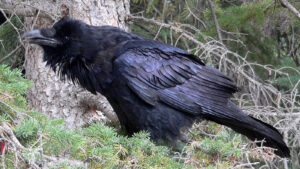
The Raven Connection
Nantosuelta is also connected with Ravens. Blue-black birds, often seen as messengers between the living world and the divine. This connection may link her to the Morrigan, a prominent figure in Celtic mythology known for her association with war and fate. See The Raven: Thief, Trickster & Black Thunderbolt.
Rituals and Worship
To honour Nantosuelta, rituals often involved water, symbolizing purification and emotional cleansing. Devotees would cleanse their bodies and homes. As they did, they imagined negative emotions and diseases being washed away by the goddess. This practice illustrates her role in promoting health, well-being, and positive energy within the home.
Modern Meaning
Today, Nantosuelta’s legacy continues to inspire those who seek protection, prosperity, and a harmonious home environment. Her symbols and rituals are still relevant in various spiritual practices, emphasizing the timeless nature of her influence.
Three Interesting Facts
- Rare Depictions: Nantosuelta is one of the few Gallic deities depicted with a model house, highlighting her unique role in domestic protection.
- Cultural Integration: The site of Lourdes, France, where the Virgin Mary appeared to Bernadette. This site was historically sacred to Persephone/Proserpina in Roman Gaul. Thus showing a blend of cultural and religious traditions over time.
- Osiris Festival: Nantosuelta’s worship coincides with the ancient Egyptian Osiris festival cycles. Particularly in Abydos and Busiris, emphasizing the interconnectedness of ancient religious practices.
Conclusion
Nantosuelta, the Celtic goddess of Protection and Domesticity, remains a significant figure in ancient mythology.
Why? Because her symbols and rituals continue to have deep meaning. They give us insights into the values and beliefs of the ancient Celtic people. By understanding her personality and cultural context, we gain a deeper appreciation for the rich tapestry of Celtic-Gallic mythology. And its enduring legacy.
Seven Key References About Nantosuelta:
- A CELTIC MISCELLANY: Translations from the Celtic Literatures, edited and translated by Kenneth Hurlstone Jackson; Routledge & Kegan Paul edition (1951), Revised edition Penguin (1971)
- THE GODS OF THE CELTS, Miranda Green, Barnes & Noble Books (1986)
- SYMBOL & IMAGE IN CELTIC RELIGIOUS ART, Miranda Green, Routledge (1989)
- THE CELTIC WORLD, Barry Cunliffe, St. Martin’s Press (1990)
- “In Celtic mythology, Nantosuelta is the goddess of Nature, the Earth, fire, and fertility.” en.wikipedia.org/wiki/Nantosuelta.
- “Nantosuelta | Goddess of Nature, Hearth & Home” britannica.com/topic/Nantosuelta.
- “Nantosuelta: The Nature Goddess” mythlok.com/nantosuelta/.
By exploring these sources, readers can dig deeper into the fascinating world of Nantosuelta and the broader study of Celtic mythology.
Thanks, Judi, for this entrancing article of a Celtic woman who became the Sacred Mother of the Celtic Folk. And helped create that crucial cultural shift from Celtic Spirituality to Celtic Christianity. – Brian
For more, see my popular post Native American Legend: Wild Woman of the Woods – Woman of the Mask
Judi Singleton is an author of well-crafted, well-researched articles. Her work can be found on ArticlesFactory. Among her writings are “Amaterasu: The Radiant Japanese Goddess of the Sun.” “Hecate: The Greek Goddess of the Crossroads.” And “Erzulie: The Haitian Goddess of Love and Healing.” Source: Free Guest Posting Articles from ArticlesFactory.com.
Celtic names, Celtic cross, Celtic goddess, Nantsovelta, raven keeper, home goddess, mother goddess. Brigid animals, pagan goddess of protection, Wild Man of the woods. Celtic Christianity, Celtic spirituality. Nantosuelta Celtic goddess.
Gallic goddesses, Earth goddesses, Fertility goddesses, Nature goddesses, Raven deities.



